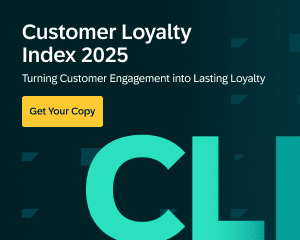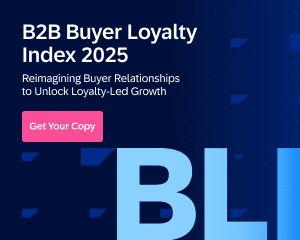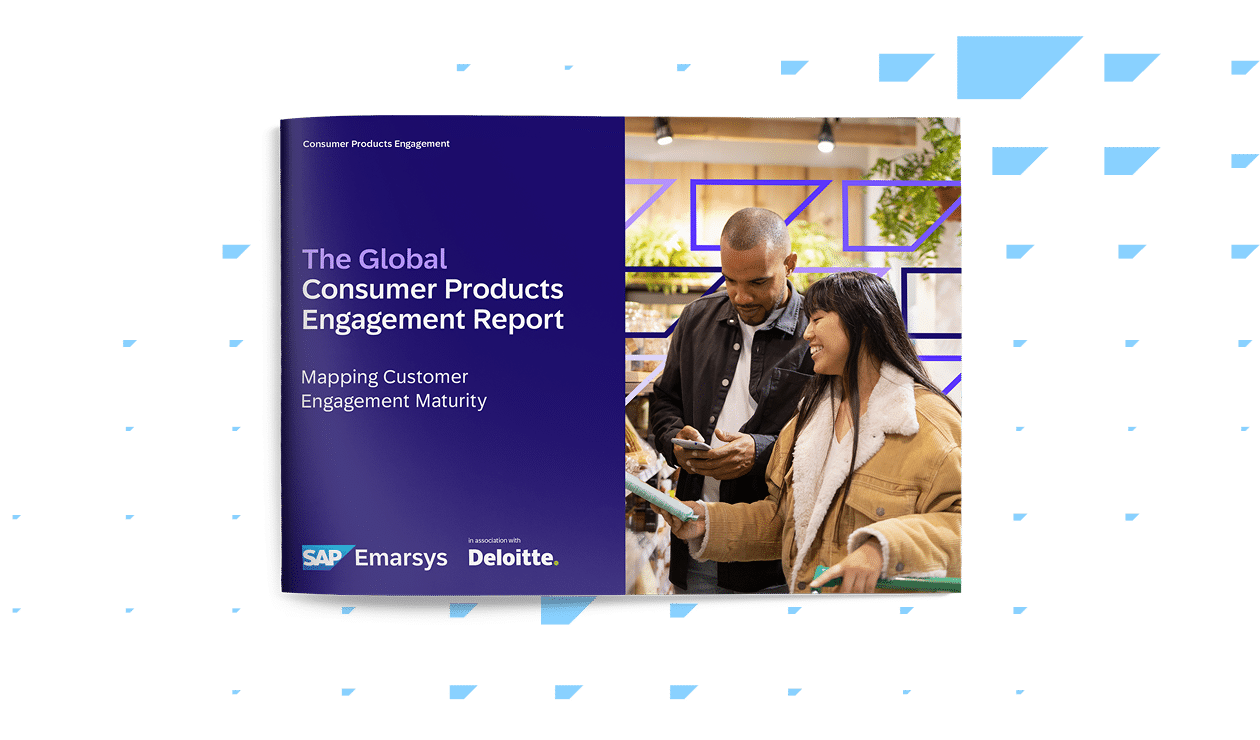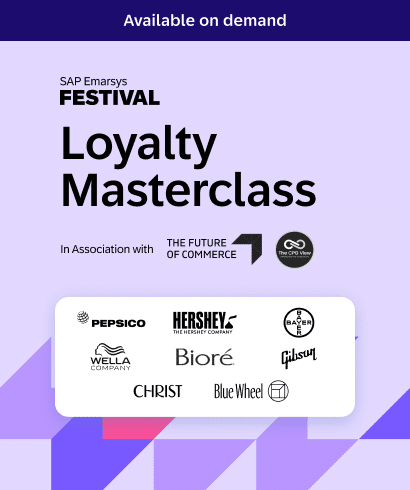If you work in DTC, you already know the rules are shifting. Customers want more value, more relevance, and more control over how brands interact with them, and they’re quicker than ever to walk away when those expectations aren’t met. The challenge is keeping up with what’s actually driving their decisions.
That’s where the numbers help. This year’s loyalty, engagement, and consumer behavior data reveals a market that’s becoming sharper, more cost-driven, and far less tolerant of poor experiences or confusing data practices. And for DTC brands, that’s both a pressure and an opportunity.
Below, you’ll find 40+ statistics from SAP Emarsys research thhat every DTC marketer should know in 2026. Use them to benchmark your performance, pressure-test your strategy, and make clearer decisions about where to invest your time, budget, and attention this year.
Consumers Are Harder to Engage and Retain
Winning and keeping customers is tougher than ever. Price sensitivity, endless choice, and economic uncertainty mean loyalty is fragile. These stats show just how big the challenge has become.
72% of consumer products marketers say it is becoming harder to engage meaningfully with customers [SAP Emarsys]
Successful engagement goes beyond simply reaching customers, instead focusing on connecting in ways that feel relevant and valuable. With nearly three quarters of marketers struggling, the pressure is on to deliver experiences that cut through the noise. This requires unified data, consistent messaging across channels, and strategies that adapt in real time.
57% of consumers have switched to private-label alternatives because they are more affordable [SAP Emarsys]
Price trumps loyalty when money’s tight. Even strong DTC brands can lose customers if they’re seen as too expensive. To stand out, brands need to lean into emotional connections, storytelling, and experiences that go beyond price.
Only 41% of consumers actively advocate for their favorite brands [SAP Emarsys]
Brand love is harder to earn than many think. Less than half of consumers actively promote their favorite brands. Advocacy-based programs, communities, and unique experiences can help close that gap.
60% of consumers believe buying directly from a brand’s website should cost less [SAP Emarsys]
The expectation of a “direct purchase advantage” is now mainstream. Customers associate DTC purchases with fewer middlemen and expect savings to reflect that. When the brand site feels identical to a marketplace on price, shipping, or convenience, customers see little reason to shop direct. This creates a compelling case for exclusive bundles, loyalty perks, and stronger value messaging on owned channels.
Only 9% of consumers say they haven’t cut back on anything [SAP Emarsys]
Almost all customers are evaluating their habits and reducing unnecessary purchases. This creates higher volatility in demand and less predictability in lifetime value models. It also pushes brands to think more creatively about retention, differentiation, and ongoing engagement that earns repeat purchases instead of assuming them.
85% of marketers believe they must adapt to change faster than ever before [SAP Emarsys]
Marketing cycles are shorter, consumer behavior shifts more rapidly, and new channels can emerge almost overnight. This constant acceleration is forcing teams to rethink how they plan and operate. Agility, experimentation, and flexible systems are now essential capabilities, not optional advantages.
77% of marketers say consumer behavior is becoming harder to predict [SAP Emarsys]
Customers are moving more fluidly between channels, changing preferences more frequently, and responding unpredictably to economic shifts. For brands relying on static segmentation or historical trends, predictive accuracy is slipping. DTC teams increasingly need real-time data and AI-driven insights to understand what customers are likely to do next.
AI Is Becoming Essential for Engagement
AI isn’t a nice-to-have anymore, it’s the engine driving modern engagement. From acquisition to retention, these stats show why more marketers are making AI the backbone of their strategy.
89% of marketers believe AI is essential for engaging new customers, and 86% say it is critical for retention [SAP Emarsys]
AI has shifted from a competitive edge to a strategic necessity. From acquisition to retention, marketers recognize that AI is critical for understanding consumers, predicting behaviors, and delivering personalized engagement at scale.
71% of retail marketers say AI helps them launch campaigns faster, saving 2.3 hours per campaign [SAP Emarsys]
That time adds up quickly. AI takes care of the heavy lifting so teams can spend less time on manual tasks and more time on strategy and creativity. The payoff? Faster, sharper, and more relevant campaigns.
69% of consumers are satisfied with AI-driven product recommendations [SAP Emarsys]
Consumers may not always realize AI is at work, but when it helps them discover the right product, they notice. Product recommendations are proof that when AI adds value, customers are more than happy to embrace it.

The Personalization Gap
Marketers think they’re personalizing, but consumers don’t always agree. The next stats highlight where brands believe they’re delivering value and where customers still feel let down.
41% of consumers want more personalized deals and offers [SAP Emarsys]
Customers expect brands to tailor pricing, discounts, and recommendations to their preferences and behavior. Generic promotions no longer capture attention, especially when budgets are tighter. For DTC brands, this reinforces the importance of leveraging first-party data to deliver individualized value at the right time and in the right context.
79% of marketers use AI to personalize content, but only 25% of consumers want AI to make shopping more personal [SAP Emarsys]
This is the personalization gap in action. While marketers double down on AI to tailor content, many consumers aren’t convinced it’s adding value. The lesson? Use AI to be helpful, not heavy-handed.
64% of marketers believe they provide enough value for consumer data, but only 29% of consumers agree [SAP Emarsys]
Consumers want to know what they’re getting in return for their data. If they don’t see clear benefits, trust fades fast. Brands need to connect the dots and show customers exactly how data sharing improves their experience.
44% of consumers say most of the marketing emails they receive are irrelevant [SAP Emarsys]
That’s nearly half of all email marketing falling flat. Smarter segmentation and real-time personalization can change that. The difference between “delete” and “click” comes down to relevance.
Only 32% of marketers feel they can effectively personalize their content and campaigns [SAP Emarsys]
Despite strong demand for personalization, many marketers struggle to execute it consistently. The challenge often lies in fragmented data, siloed channels, and limited automation. This gap between intention and ability shows how much opportunity remains for DTC brands that invest in stronger data foundations and unified engagement platforms.
Only 34% of marketers believe they can effectively segment and analyze audiences [SAP Emarsys]
Segmentation gets harder as customer journeys diversify. Many brands have the data but lack the tools or integrations to turn it into insight. Without accurate segmentation, personalization loses impact, and engagement becomes less efficient. Strengthening audience understanding is essential to delivering meaningful experiences across the lifecycle.
Only 35% of marketers feel they can predict future consumer behaviors [SAP Emarsys]
Predictive capability is a major competitive differentiator, yet most brands don’t feel confident in their ability to forecast behavior. As demand patterns shift more quickly, the gap between reactive and proactive marketing widens. AI-driven prediction helps DTC brands anticipate needs, personalize at speed, and intervene early to prevent churn.

Consumers Push Back on Data Practices
Data fuels personalization, but mishandling it erodes trust fast. These stats reveal how consumers really feel about data requests and what happens when brands don’t follow through.
71% of US consumers are put off when brands ask for data but fail to explain how it will be used [SAP Emarsys]
Transparency isn’t optional anymore. If customers don’t understand why you’re asking for data, they’ll hold back. Clear, simple explanations can make the difference between hesitation and trust.
79% of consumers are discouraged when brands ask for a lot of personal data [SAP Emarsys]
Long forms and excessive requests are a sure-fire way to turn off consumers. Remember: less is more. Asking for unnecessary details creates friction and doubt. A progressive profiling approach, capturing small pieces of data over time, can build trust while creating a richer customer profile.
43% of consumers believe brands collect their data and never use it [SAP Emarsys]
If data sits unused, your customers notice. They expect to see a payoff when they share personal information. Marketers need to prove they’re using it to create better experiences, not just collecting it for the sake of it.
85% of marketers say they are prepared to react quickly to new data regulations [SAP Emarsys]
Regulatory changes around privacy and data protection are reshaping how brands collect and use customer information. Many marketers now see compliance as a strategic advantage rather than a barrier. For DTC brands, respecting preferences, communicating transparently, and minimizing unnecessary data collection are key to building long-term trust.
51% of marketers say they suffer from “dark data”, information that’s collected but never used [SAP Emarsys]
Dark data weakens both customer trust and operational efficiency. When brands collect information without a clear purpose, customers feel uneasy and marketers lose opportunities to create value. Eliminating dark data requires tighter data strategies, clearer consent journeys, and platforms that make insights actionable rather than overwhelming.
Only 41% of brands have fully integrated their CX, ERP, and marketing technologies [SAP Emarsys]
Fragmented systems make it difficult to create consistent, trustworthy experiences. When data sits in silos, personalization suffers, journeys break, and customers sense the inconsistency. Unified platforms help brands act on insights faster, maintain accuracy, and build the seamless experiences customers now expect.

Loyalty is Changing Shape
Points and prizes as loyalty rewards don’t cut it like they used to. Your customers want loyalty programs that feel meaningful, ethical, and experience-driven. These stats show how the definition of loyalty is shifting.
Consumers belong to an average of 16.6 loyalty programs, but only 55% are active [SAP Emarsys]
Program fatigue is real. Simply enrolling customers into a loyalty scheme is no longer enough. Marketers need to focus on engagement, rewarding behaviors, and creating meaningful reasons for customers to stay active.
Less than 50% of loyalty rewards are redeemed by members [SAP Emarsys]
Unused rewards represent a missed opportunity for both the customer and the brand. To drive retention, loyalty initiatives must be designed for simplicity and relevance, ensuring customers actually claim and benefit from their rewards.
Ethical loyalty has grown 7% since 2021, and true loyalty has grown 6% [SAP Emarsys]
The future of loyalty lies in values and experiences. Consumers are increasingly loyal to brands that align with their beliefs or deliver exceptional experiences. Discount-driven loyalty is fading, replaced by emotional and ethical connections.
Overall loyalty has dropped from 77% in 2022 to 69% in 2024 [SAP Emarsys]
Just two years ago, more than three quarters of consumers described themselves as loyal to certain brands. That number has since fallen by eight percentage points, showing just how much harder it is to keep customers engaged. Economic pressure, endless alternatives, and AI-powered discovery have made switching easier than ever.
Shifts in Consumer Behavior by Generation
Gen Z, Millennials, Gen X and Boomers all shop differently. From apps to in-store habits, these stats break down how each generation is reshaping engagement.
56% of Gen Z say they don’t care about brands as long as products meet their needs [SAP Emarsys]
Gen Z’s pragmatic approach is reshaping brand strategy. They care less about labels and more about utility, value, and alignment with personal values. This means marketers must work harder to build authentic connections.
88% of Gen Z and 85% of Boomers have made spending cutbacks [SAP Emarsys]
Generational differences matter, but financial caution is universal. With consumers across age groups cutting back, marketers must tailor offers and messages to meet varying priorities while demonstrating clear value.
40% of Gen Z browse directly from a brand’s app, compared to 25% of Boomers [SAP Emarsys]
Digital-native generations are driving new engagement norms. For Gen Z, brand apps and social commerce are second nature. For Boomers, in-store and websites still dominate. Effective strategies must reflect these channel preferences.
30% of Gen Z rely on influencer reviews to make buying decisions [SAP Emarsys]
Influencers remain central to how younger consumers evaluate products. Gen Z sees creator content as more authentic and trustworthy than brand messaging. For DTC brands, investing in long-term creator partnerships, rather than one-off influencer bursts, can create consistent social proof that directly impacts conversion.
29% of Gen Z shop through social commerce platforms like Instagram Shop [SAP Emarsys]
Social commerce is becoming a default shopping environment for younger consumers. Discovery, evaluation, and purchasing often happen within a single platform session. For DTC marketers, enabling seamless, frictionless shopping in these environments is essential to winning impulse purchases and reducing drop-off.
Omnichannel Experiences Drive Engagement
Shoppers don’t think in channels, they think in convenience. These stats highlight how customers are blending loyalty cards, subscriptions, and new experiences like AR and voice assistants.
48% of consumers have signed up for a loyalty card to save on costs [SAP Emarsys]
Loyalty programs remain powerful when linked to tangible savings. In a cost-conscious environment, providing clear financial benefits is an effective way to sustain engagement.
36% of consumers buy products via repeat subscriptions [SAP Emarsys]
Subscriptions offer convenience for consumers and predictable revenue for brands. DTC marketers who lean into recurring models can build stronger retention and simplify the customer journey.
44% of consumers value immersive shopping through AR or VR, while 37% value voice-assistant interactions [SAP Emarsys]
Consumers are open to innovation. Emerging channels like AR, VR, and voice are no longer futuristic concepts – they’re already shaping expectations. Early adopters can differentiate by offering fresh, memorable experiences.
Email (38%), web (31%), and mobile apps (28%) are consumers’ top channels for interacting with brands [SAP Emarsys]
Email remains the most relied-on channel for direct communication, but mobile apps are gaining momentum fast. With nearly a third of consumers turning to apps for browsing and buying, brands that haven’t invested in mobile experiences risk losing relevance. The mix also shows how customers expect consistent, cross-channel experiences, not isolated touchpoints.
Only 19% of marketers prioritize mobile apps, despite consumers ranking them as their third most-used channel [SAP Emarsys]
This is one of the biggest gaps in the engagement landscape. While customers increasingly rely on mobile apps for convenience and personalization, marketers invest far less in them. For DTC businesses, this represents a missed opportunity to create owned, high-frequency engagement environments that strengthen retention and repeat purchases.b

Retention Remains the Most Profitable Play
Winning a new customer costs more than keeping one. These stats prove why high-performing brands put retention at the heart of their strategy.
81–90% of high-maturity brands report high customer retention rates [SAP Emarsys]
Retention pays. Brands that invest in customer engagement maturity, with connected data and advanced personalization, consistently outperform others in keeping customers loyal.
93% of marketers at high-maturity brands say their organization has a strong emotional connection with consumers [SAP Emarsys]
Emotional connection is a predictor of long-term success. It drives advocacy, repeat purchases, and resilience during times of economic pressure. High-performing brands are those that know their customers on a deeper level.
Email Continues to Outperform
New platforms come and go, but email still delivers. These stats show why it remains a cornerstone of DTC marketing and how smart brands are using it to stand out.
16% of consumers only read the subject line of brand emails, and 32% read no further than the first 1–2 sentences [SAP Emarsys]
Attention is scarce. Emails must be concise, compelling, and personalized from the very first line. A strong subject line can determine the difference between engagement and deletion.
Consumers Want Speed and Simplicity
At the end of the day, customers just want things to be easy. These stats reveal how much speed and reliability influence whether shoppers stick around.
55% of consumers say AI makes shopping easier, and 53% say it makes shopping faster [SAP Emarsys]
Convenience is king. Consumers increasingly value experiences that save them time and effort, and AI is helping brands deliver. From recommendations to checkout, efficiency drives satisfaction and loyalty.
37% of consumers want quicker customer service, 32% want faster delivery, and 32% want products always in stock [SAP Emarsys]
The basics still matter most. While innovation captures headlines, consumers continue to prioritize reliability and speed. Brands that can consistently deliver on these expectations will win long-term loyalty.
41% of consumers want brands to help them discover products they didn’t know they’d love [SAP Emarsys]
Customers want product discovery to feel effortless and intuitive. This creates a clear opportunity for brands that use predictive recommendations, curated assortments, and personalized content to guide shoppers with confidence. When DTC brands introduce the right product at the right moment, they unlock incremental revenue while strengthening long-term loyalty.
Go Deeper with the Data that Shaped this Article
Access the full SAP Emarsys reports to explore all the insights, benchmarks, and customer behavior trends driving 2026 strategies.









